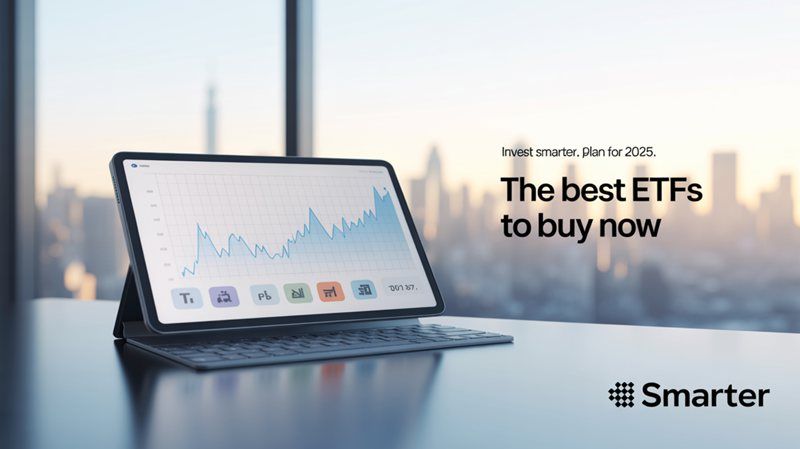MarketLens
Is VYM the Top High-Yield ETF for Income Investors?
This report critically evaluates the Vanguard High Dividend Yield Index Fund ETF (VYM) as a top high-yield ETF choice for income investors. It also explores other high-yield ETFs that could be suitable alternatives. The analysis is based on various metrics, including expense ratios, dividend yields, historical performance, and portfolio composition. The report aims to provide a comprehensive understanding of VYM’s strengths and weaknesses and compare it with other high-yield ETFs to help investors make informed decisions.
Introduction
VYM: An Overview
Expense Ratio
One of the most compelling features of VYM is its low expense ratio of 0.06%. This makes it one of the most cost-effective options in the high-yield ETF market. Lower expense ratios are crucial for income investors as they directly impact net returns. In comparison, other high-yield ETFs like the Invesco High Yield Equity Dividend Achievers ETF (PEY) have higher expense ratios, such as 0.52%, which can erode returns over time.
Dividend Yield
VYM offers a dividend yield of 2.8%, which is attractive but not the highest among its peers. For instance, the Invesco High Yield Equity Dividend Achievers ETF (PEY) offers a yield of 4.78%, and the Schwab U.S. Dividend Equity ETF (SCHD) offers a yield of 3.3%. While VYM’s yield is lower, it is still competitive and provides a steady income stream.
Top Holdings
VYM’s portfolio includes high-quality, dividend-paying stocks such as Broadcom, JPMorgan Chase, and Exxon Mobil. These companies are known for their financial stability and consistent dividend payments, making VYM a reliable choice for income investors. The diversified nature of VYM’s holdings also reduces risk, providing a balanced approach to income generation and capital appreciation.
Performance
VYM has recorded solid long-term returns, making it a compelling option for investors seeking both income and capital appreciation. Its diversified portfolio and focus on high-quality stocks contribute to its robust performance. However, it is essential to compare VYM’s performance with other high-yield ETFs to understand its relative standing.
Comparative Analysis of High-Yield ETFs
Invesco High Yield Equity Dividend Achievers ETF (PEY)
Dividend Yield and Expense Ratio
PEY offers a higher dividend yield of 4.78% compared to VYM’s 2.8%. However, its expense ratio is significantly higher at 0.52%. While PEY provides a higher income stream, the higher expense ratio could offset some of these gains.
Historical Performance
PEY has a 10-year average annual return of 9.68%, which is impressive. However, the higher expense ratio could impact net returns, making it essential for investors to weigh the benefits of higher yields against the costs.
Schwab U.S. Dividend Equity ETF (SCHD)
Dividend Yield and Expense Ratio
SCHD offers a dividend yield of 3.3%, higher than VYM’s 2.8%. It also has a low expense ratio of 0.06%, making it a cost-effective option. SCHD’s combination of higher yield and low expense ratio makes it a strong contender.
Investment Strategy
SCHD focuses on companies that have increased their dividends for at least 10 consecutive years. This strategy ensures that the ETF includes financially strong companies committed to dividend growth, making it an attractive option for income investors.
Vanguard International High Dividend Yield ETF (VYMI)
Dividend Yield and Expense Ratio
VYMI offers a dividend yield of 4.45% and has an expense ratio of 0.22%. While its expense ratio is higher than VYM’s, it provides a higher yield, making it a viable option for those seeking higher income.
Portfolio Composition
VYMI offers exposure to foreign stocks with above-average dividend yields, with about 80% in developed markets. This international diversification can provide additional growth opportunities and reduce domestic market risk.
Invesco S&P 500 High Dividend Low Volatility ETF (SPHD)
Dividend Yield and Expense Ratio
SPHD offers a dividend yield of 3.61% and has an expense ratio of 0.30%. While its expense ratio is higher than VYM’s, it provides a higher yield and focuses on low-volatility stocks, making it suitable for risk-averse investors.
Historical Performance
SPHD has a 10-year average annual return of 8.92%, which is competitive. Its focus on low-volatility stocks can provide a more stable income stream, appealing to conservative investors.
Detailed Comparison of VYM and SCHD
Dividend Yield
SCHD offers a higher dividend yield of 3.3% compared to VYM’s 2.8%. This higher yield can provide a more substantial income stream, making SCHD more attractive for income-focused investors.
Expense Ratio
Both VYM and SCHD have an expense ratio of 0.06%, making them equally cost-effective. This low expense ratio ensures that more of the returns are passed on to the investors.
Investment Strategy
SCHD focuses on companies that have increased their dividends for at least 10 consecutive years, excluding REITs. It evaluates stocks based on a composite score that factors in cash flow to total debt, return on equity, dividend yield, and five-year dividend growth rate. This strategy ensures that SCHD includes financially strong companies committed to dividend growth.
VYM, on the other hand, focuses on high-quality, dividend-paying stocks but does not have the same stringent criteria for dividend growth. This difference in strategy can impact the stability and growth of the income stream.
Historical Performance
SCHD has a 10-year average annual return of 11.43%, higher than many other high-yield ETFs. This strong performance, combined with its higher yield and low expense ratio, makes SCHD a compelling option for income investors.
Other Notable High-Yield ETFs
Fidelity High Dividend ETF (FDVV)
Dividend Yield and Expense Ratio
FDVV offers a dividend yield of 2.90% and has an expense ratio of 0.29%. While its yield is slightly higher than VYM’s, its expense ratio is also higher.
Investment Strategy
FDVV targets large- and mid-cap dividend stocks expected to grow their dividends. This focus on dividend growth can provide a stable and growing income stream, making it an attractive option for income investors.
WisdomTree U.S. SmallCap Dividend Fund (DES)
Dividend Yield and Expense Ratio
DES offers a dividend yield of 2.85% and has an expense ratio of 0.38%. While its yield is comparable to VYM’s, its expense ratio is higher.
Portfolio Composition
DES invests in small-cap, value-oriented U.S. stocks that pay dividends. This focus on small-cap stocks can provide higher growth potential but also comes with higher risk.
FCF International Quality ETF (TTAI)
Dividend Yield and Expense Ratio
TTAI offers a dividend yield of 2.36% and has an expense ratio of 0.59%. Its yield is lower than VYM’s, and its expense ratio is higher, making it less attractive from a cost perspective.
Investment Strategy
TTAI invests in foreign high-quality stocks with strong free cash flow. This focus on quality and cash flow can provide a stable income stream, but the higher expense ratio can impact net returns.
Conclusion
Is VYM a Top High-Yield ETF Choice for Income Investors?
Based on the analysis, VYM is a strong contender for income investors due to its low expense ratio, competitive dividend yield, and diversified portfolio of high-quality stocks. However, it is not the highest-yielding option available. ETFs like SCHD and PEY offer higher yields and have their own unique advantages.
Are There Other Good High-Yield ETFs for Investors?
Yes, there are several other high-yield ETFs that income investors should consider. SCHD stands out due to its higher yield, low expense ratio, and strong historical performance. PEY offers the highest yield among the compared ETFs but comes with a higher expense ratio. VYMI provides international diversification with a higher yield, making it a viable option for those looking to diversify beyond U.S. markets.
Final Recommendation
While VYM is a solid choice for income investors, those seeking higher yields and willing to consider slightly higher expense ratios should explore options like SCHD and PEY. Each ETF has its own strengths and weaknesses, and the best choice will depend on the investor’s specific needs, risk tolerance, and investment strategy.
In conclusion, VYM remains a compelling option for income investors, but it is essential to consider other high-yield ETFs to find the best fit for individual investment goals.
Related Articles
2025’s Top Sectors: Your Savvy ETF Guide
Category
You may also like
No related articles available
Breaking News
View All →No topics available at the moment






